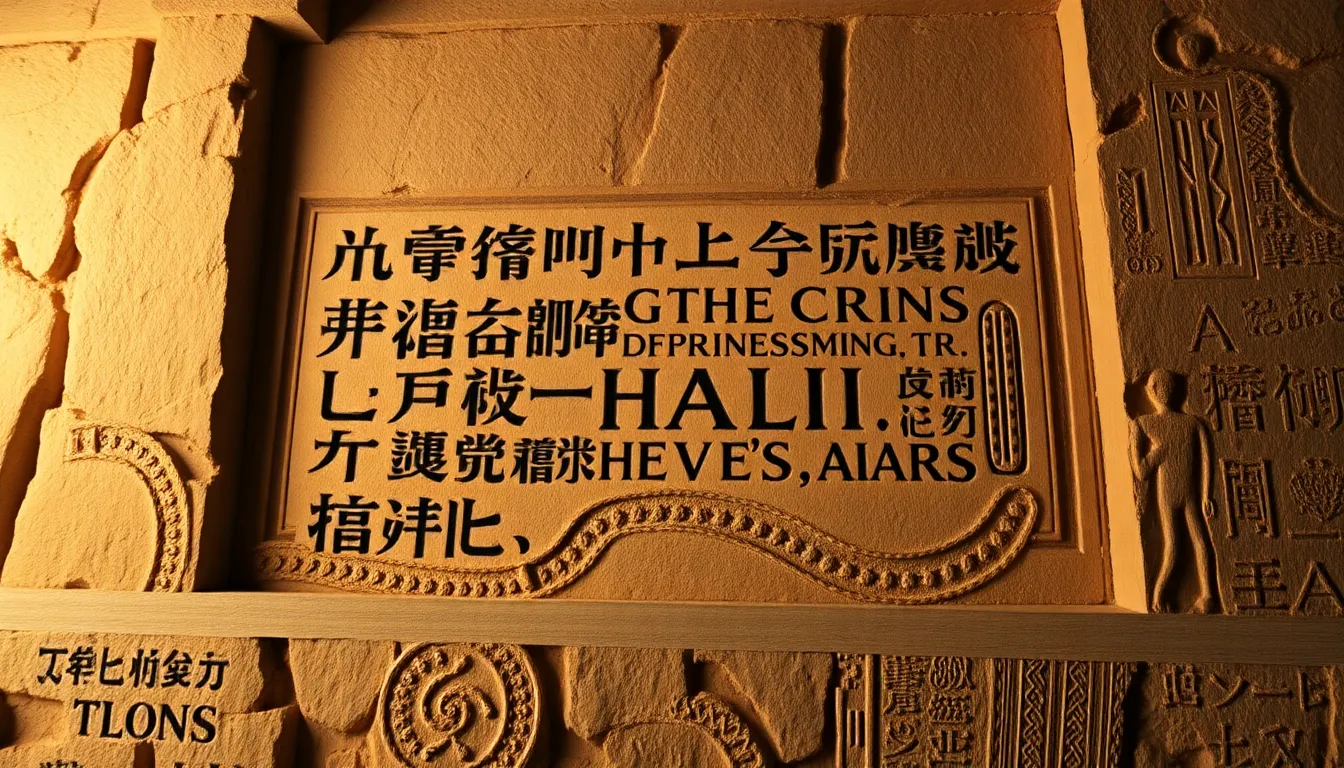The Spiritual Significance of Tomb Texts
I. Introduction
Tomb texts are inscriptions and writings found in burial sites that serve to honor the deceased and provide guidance for the afterlife. These texts hold immense historical significance, illuminating the beliefs, practices, and values of ancient civilizations. In this article, we will explore the various facets of tomb texts, particularly within the context of Egyptian mythology, and discuss their spiritual implications.
II. Historical Background of Tomb Texts
The origins of tomb texts can be traced back to ancient civilizations, where they evolved alongside cultural practices surrounding death and the afterlife. In particular, the Egyptians developed a rich tradition of funerary inscriptions that would influence various cultures.
- Origin and Evolution: Tomb texts have been found in ancient Egypt, Mesopotamia, and other early societies. They started as simple markers of identity and evolved into complex narratives about the deceased’s life and their journey after death.
- Key Examples: In Ancient Egypt, the Pyramid Texts and Coffin Texts served as some of the earliest forms of tomb inscriptions, while Mesopotamian cultures also utilized similar practices, though often with different themes and deities.
- Funerary Practices: Tomb texts played a critical role in funerary practices by providing the deceased with necessary knowledge and protection in the afterlife.
III. Types of Tomb Texts
Tomb texts can be categorized into several types, each serving distinct purposes in the context of funerary practices:
- Funerary Inscriptions and Epitaphs: These are short texts placed on tombs, often summarizing the life of the deceased and their accomplishments.
- Religious and Mythological Texts: These include passages that invoke deities, describe the afterlife, and provide prayers for the deceased.
- Personal Narratives and Biographies: Some tomb texts are detailed accounts of the individual’s life, reflecting their personal beliefs and experiences.
IV. Theological Themes in Tomb Texts
Many tomb texts exhibit profound theological themes that reflect the spiritual beliefs of the cultures that created them:
- Concepts of the Afterlife: Tomb texts often express beliefs about what happens after death, including ideas of judgment, resurrection, and eternal life.
- Deities and Spiritual Guidance: These texts frequently invoke gods and goddesses, requesting their protection and guidance for the deceased in the afterlife.
- Moral and Ethical Teachings: Tomb texts often contain moral injunctions, emphasizing the importance of living a virtuous life to secure a favorable afterlife.
V. Symbolism and Iconography
The symbolism found in tomb texts is rich and varied, often intertwined with visual elements:
- Common Symbols: Symbols such as the Ankh (representing life), the scarab (symbolizing rebirth), and the Eye of Horus (offering protection) are frequently found in tomb texts.
- Interpretation of Visual Elements: The imagery accompanying the texts often depicts scenes from the afterlife, illustrating the journey of the soul and the presence of deities.
- Text and Imagery Relationship: The combination of text and imagery serves to enhance the spiritual message, creating a holistic experience for the reader or observer.
VI. Cultural Significance and Legacy
Tomb texts offer a window into the societal values and beliefs of ancient cultures:
- Reflections of Societal Values: The content of tomb texts reveals much about the cultural priorities and spiritual beliefs of the time.
- Influence on Later Literature: Many themes from ancient tomb texts have influenced later religious and spiritual writings, contributing to ongoing dialogues about death and the afterlife.
- Modern Perceptions: Today, tomb texts are studied not only for their historical importance but also for their insights into human spirituality and existential questions.
VII. Contemporary Relevance
The study of tomb texts continues to have relevance in modern spirituality and academia:
- Impact on Modern Spirituality: Many contemporary spiritual practices draw inspiration from ancient beliefs about the afterlife, often incorporating elements found in tomb texts.
- Revival and Reinterpretation: Modern practitioners may reinterpret ancient texts to fit contemporary spiritual frameworks, finding new meanings in the ancient words.
- Academic Interest: Researchers continue to explore tomb texts, uncovering new insights and fostering interdisciplinary studies that bridge archaeology, history, and theology.
VIII. Conclusion
In summary, tomb texts are invaluable resources for understanding the spiritual beliefs and practices of ancient civilizations. They provide insights into concepts of the afterlife, the role of deities, and the moral frameworks that governed the lives of the deceased. As we continue to study and interpret these ancient writings, they remain a testament to the enduring quest for meaning in the face of mortality and the human desire for connection with the divine. The future of research on tomb texts holds promise for deeper explorations into the intersection of spirituality, culture, and history.




